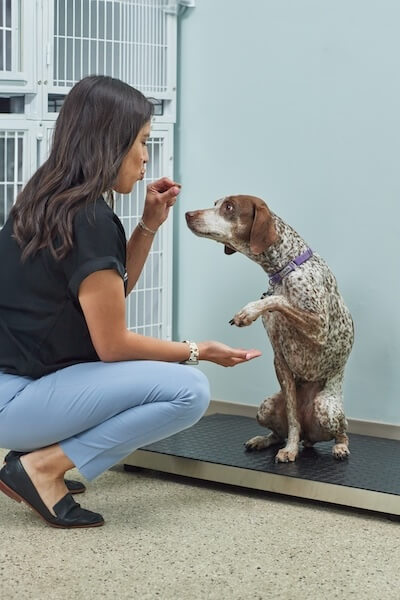On August 1, 2024, the CDC’s rabies-related requirements for dogs entering the United States changed significantly. It included major changes for pets traveling from high-risk rabies countries but also introduced new standards that impact pet owners and shippers departing from low- or no-risk countries.
Whether you know you’re traveling from a high-risk rabies country or unsure whether these regulations will impact your upcoming relocation, we’re here to help.
Tailwind Global Pet is an expert source for complex pet shipping into the United States. As one of only 7 CDC-approved Animal Care Facilities (ACFs) in the United States, a key component of the CDC’s new regulations, we’re approved to navigate the new standards as efficiently as possible.
How it works


What Changed on August 1, 2024?
Effective Aug. 1, dogs arriving in the United States from a high-risk rabies country must fly into one of only 6 approved airports below:
- Los Angeles International Airport (LAX)
- Hartsfield-Jackson Atlanta International Airport (ATL)
- Miami International Airport (MIA)
- John F. Kennedy International Airport (JFK)
- Philadelphia International Airport (PHL)
- Dulles International Airport (IAD)
Previously, pet owners were able to fly into 12 additional airports from high-risk countries. Those 6 above are now the only option.
These additional requirements apply as of Aug. 1:
- Foreign-vaccinated dogs arriving from a high-risk country must have planned travel arrangements booked with one of 7 CDC-approved ACFs near the 6 approved airports before arrival. Tailwind Global Pet offers these services at LAX.
- Foreign-vaccinated dogs coming from high-risk rabies countries must get rabies serology titer results from a CDC-approved lab 28 days before travel to the U.S. If this isn’t possible, the pets must be quarantined for 28 days upon arrival, with no exceptions. With our comprehensive boarding options at our Kennel Club LAX facility, we’re well-equipped to help with all quarantine requirements.
- Dogs arriving from high-risk countries without a history of U.S.-administered rabies vaccines will be revaccinated upon arrival.
- Dogs younger than 6 months of age are no longer allowed to enter the U.S. from any country. There are no exceptions.
- You will no longer be able to apply for CDC Dog Import Permits but will be required to fill out the free CDC Dog Import Forms online 2-10 days before arrival.
- Your pet must travel with a receipt of your completed CDC Dog Import Form. The forms will be accessible starting July 15, 2024.
- Dogs who arrive from low- or no-risk countries must still meet entry requirements around rabies vaccinations. All dogs must arrive with a government-endorsed export certificate from the country of export.
The CDC’s Dog Importation page can help you better understand what to expect.
Typical Timeline


Frequently Asked Questions
We have compiled a list of questions our clients have already asked about how these new regulations will impact their pet’s travel. Each answer is accurate, to the best of our knowledge, according to the CDC’s regulations that take effect on August 1, 2024.
If you have a question related to these changes that isn’t listed below, contact us. Please note that we can’t provide a quote based on that contact form. For a quote, get started here, and a member of our team will contact you.
General Questions
Traveling from High-Risk Departure Countries
Traveling from Low- or No-Risk Departure Countries
Rabies Vaccination Questions

Get World-Class Support for Your Pet’s Travel
If you’re arriving in LAX, we have decades of experience helping pet owners navigate their pets’ arrival with care and ease. Our facility, Kennel Club LAX, is your best option for meeting CDC requirements upon arrival and giving your pet a safe rest stop before they’re reunited with you.
We know the new rules may complicate your travel plans. We’re here to support you through that process with first-class, personalized service every step of the way.
